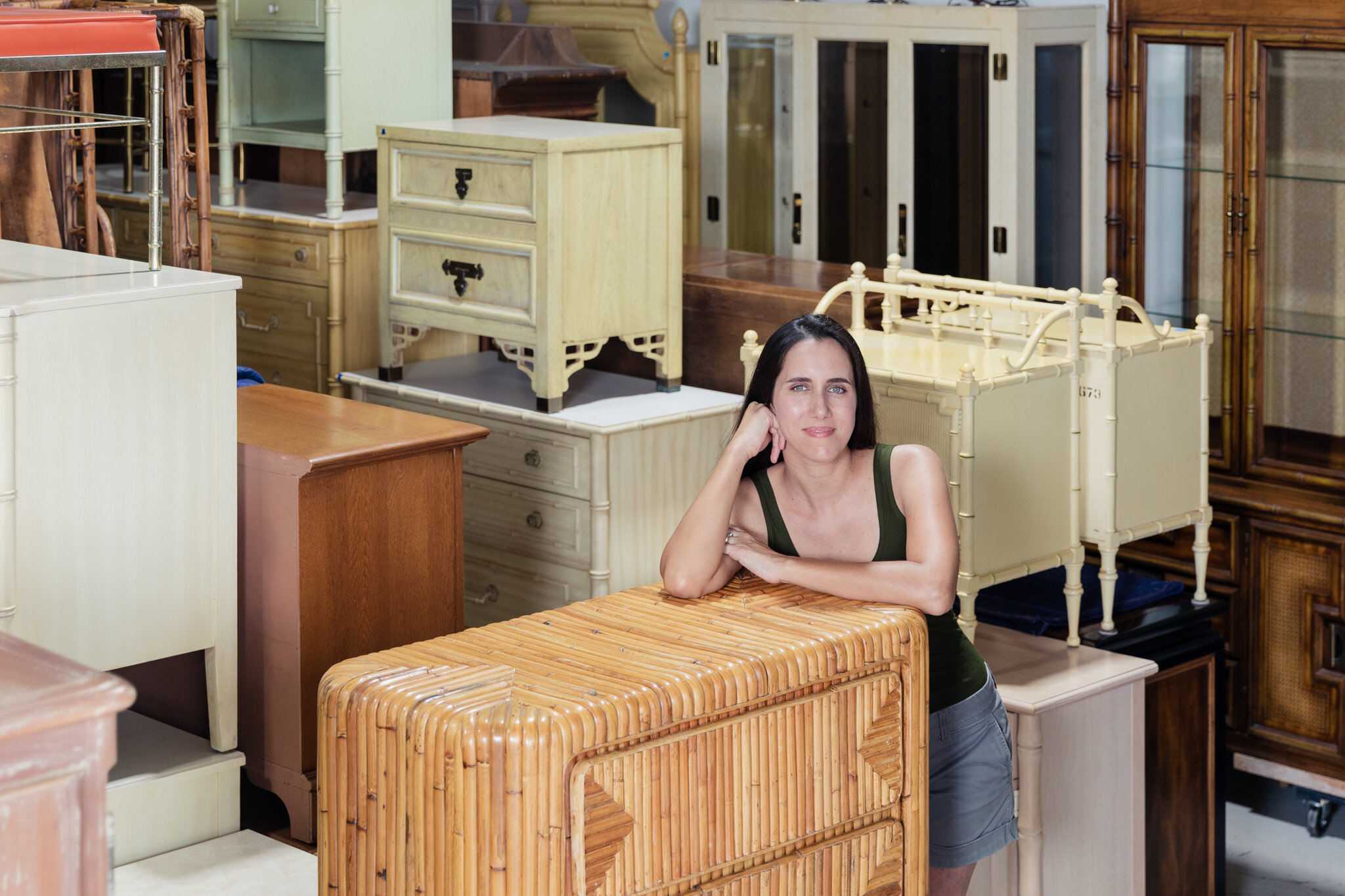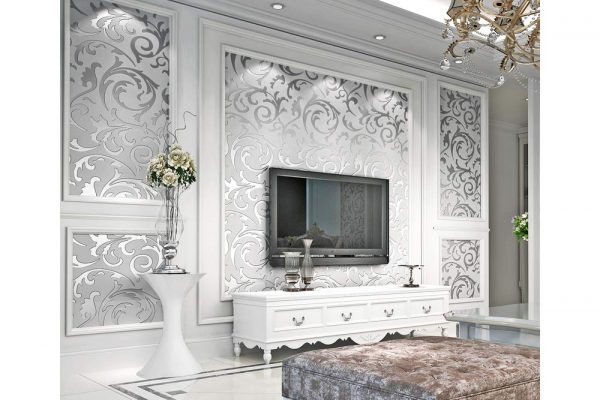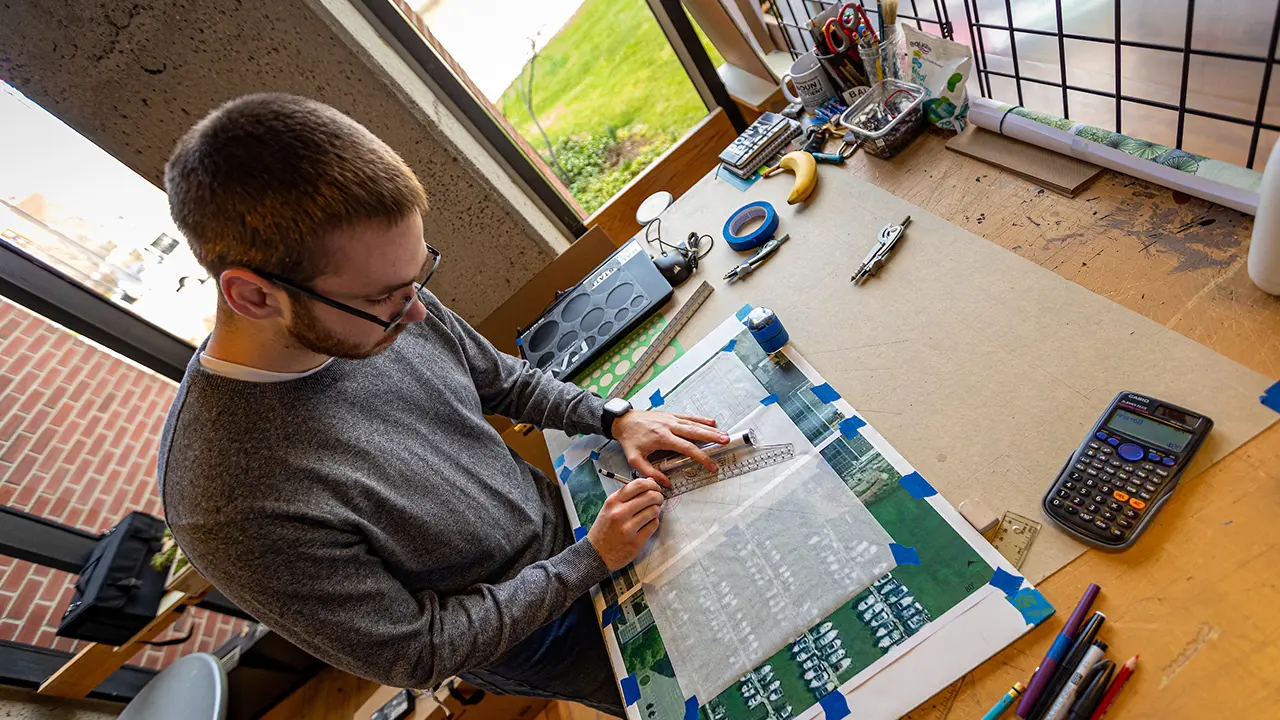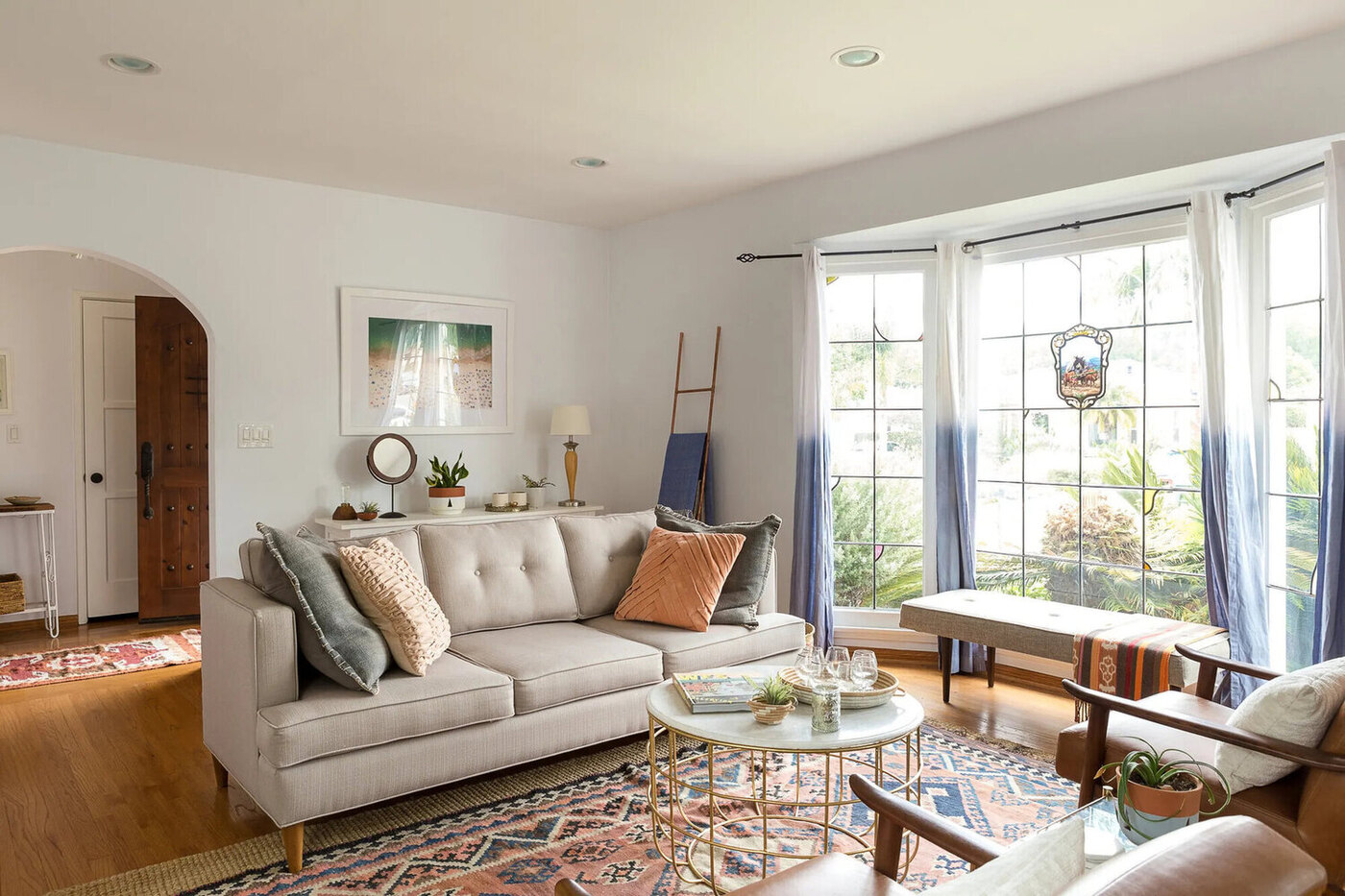Home>diy>Architecture & Design>How To Make Money In House Design


Architecture & Design
How To Make Money In House Design
Modified: January 4, 2024
Discover the secrets to earning money in the world of house design with our comprehensive guide. Uncover expert tips and strategies for success in architecture design.
(Many of the links in this article redirect to a specific reviewed product. Your purchase of these products through affiliate links helps to generate commission for Storables.com, at no extra cost. Learn more)
Introduction
Welcome to the world of house design, where creativity meets functionality and architectural dreams turn into reality. The field of house design offers a unique opportunity to blend artistic expression with practicality, creating spaces that not only inspire but also cater to the needs and desires of homeowners. If you have a passion for architecture and a keen eye for detail, embarking on a career in house design can be a rewarding and lucrative endeavor.
In this article, we will explore the various aspects of making money in house design, from building a strong portfolio and attracting clients to negotiating prices and contracts. We will also delve into incorporating sustainable design principles, collaborating with contractors and suppliers, and marketing your house design services effectively. Additionally, we will discuss maximizing profitability, maintaining client satisfaction, and keeping up with the latest design trends to stay ahead of the curve.
Whether you are a seasoned architect looking to branch out into independent house design or a budding designer eager to make your mark in the industry, this article will provide valuable insights and strategies to help you succeed. Let’s dive in and discover how to turn your passion for house design into a profitable venture.
Key Takeaways:
- Building a successful career in house design requires a blend of talent, business acumen, and continuous learning. Prioritize effective communication, manage client expectations, and deliver consistent quality to drive your business forward.
- Stay informed about design trends, emerging technologies, and best practices to deliver innovative and relevant solutions to your clients. Embrace the continuous learning journey and strive for excellence in your work to make a lasting impact in the industry.
Read more: How To Save Money On Building A House
Getting Started in House Design
If you’re new to the world of house design, getting started can seem a bit daunting. However, with the right approach and a few key steps, you can lay the foundation for a successful career. Here are some tips to help you get started in house design:
- Educate Yourself: Building a solid foundation of knowledge is crucial in house design. Start by obtaining a degree in architecture or a related field. This will provide you with the technical skills and theoretical knowledge needed to excel in the profession. Additionally, consider attending workshops, seminars, and industry conferences to stay updated on the latest trends and advancements in house design.
- Build Your Skills: In addition to formal education, honing your skills is essential. Practice sketching and using design software to bring your ideas to life. Develop a strong understanding of architectural principles, including spatial planning, proportion, and materials. Experiment with different design styles and techniques to expand your repertoire.
- Gain Experience: To build your credibility and portfolio, consider seeking internships or entry-level positions at architecture firms or design studios. This hands-on experience will provide valuable insights into the practical aspects of house design, from working with clients to collaborating with contractors. Additionally, consider taking on smaller design projects for friends and family to showcase your skills.
- Network: Building a strong professional network is crucial in the world of house design. Attend industry events, join professional associations, and connect with fellow designers and architects. This network can provide valuable referrals, collaborations, and mentorship opportunities that can propel your career forward.
- Stay Inspired: House design is a constantly evolving field, so it’s important to stay inspired and continuously seek new ideas. Follow design blogs, visit architectural landmarks, and explore different cultures and design styles. Inspiration can come from anywhere, so keep an open mind and embrace the creative possibilities.
By following these steps, you can lay a solid foundation for a successful career in house design. Remember, Rome wasn’t built in a day, so be patient and persistent in your pursuit of excellence. The journey may have its challenges, but the rewards of creating beautiful and functional spaces make it all worthwhile.
Building a Strong Portfolio
In the competitive world of house design, a strong portfolio can be the key to attracting clients and showcasing your skills. Your portfolio serves as a visual representation of your work and is often the first impression potential clients have of your design capabilities. Here are some tips to build a strong portfolio:
- Select Diverse Projects: Including a variety of projects in your portfolio demonstrates your versatility as a designer. Choose projects that showcase different architectural styles, sizes, and functionalities. This diversity will give potential clients a glimpse into your ability to adapt to various design requirements.
- Showcase Your Best Work: Your portfolio should highlight your strongest designs and projects. Include high-quality images and detailed descriptions of each project, highlighting the unique aspects and challenges you encountered. Use before-and-after images to demonstrate the transformative power of your designs.
- Highlight Technical Proficiency: In addition to showcasing your creative skills, emphasize your technical proficiency in your portfolio. Include drawings, floor plans, and 3D renderings to showcase your ability to translate ideas into tangible designs. This will instill confidence in potential clients that your designs can be effectively executed.
- Tell a Story: A well-crafted portfolio goes beyond just showcasing individual projects. It should tell a story that reflects your design philosophy and approach. Explain your design process, inspirations, and the problem-solving techniques you utilized. Create a narrative that captivates the viewer and leaves a lasting impression.
- Update Regularly: Keep your portfolio up to date by continually adding new projects and removing older ones that no longer represent your best work. This demonstrates your commitment to growth and improvement as a designer. Regularly updating your portfolio also ensures that potential clients see your most recent and relevant work.
Remember, quality over quantity is essential when building a strong portfolio. It’s better to showcase a select few exceptional projects than to overwhelm potential clients with a large volume of mediocre work. Invest time and effort into curating a portfolio that truly showcases your unique design aesthetic and capabilities.
Lastly, leverage the power of the internet by creating an online portfolio. This will allow potential clients to easily access your work and share it with others. Optimize your online portfolio for search engines to increase its visibility and reach.
A strong and visually appealing portfolio will set you apart in a competitive industry. It will serve as a powerful tool to attract clients and secure house design projects that allow you to showcase your creativity and expertise.
Finding and Attracting Clients
As a house designer, finding and attracting clients is crucial to the growth and success of your business. While your design skills are essential, it is equally important to have effective strategies in place to market your services and connect with potential clients. Here are some tips to help you find and attract clients:
- Define Your Target Market: Understanding your target market is essential for effective client acquisition. Determine the demographic of the clients you wish to serve, such as homeowners, real estate developers, or commercial property owners. Identify their preferences, needs, and pain points to tailor your marketing efforts accordingly.
- Establish an Online Presence: In today’s digital age, having a strong online presence is crucial for attracting clients. Create a professional website that showcases your portfolio and provides information about your services. Optimize your website for search engines to increase visibility. Additionally, leverage social media platforms to engage with potential clients and share your design expertise.
- Networking and Referrals: Networking is a powerful tool for building connections and generating referrals. Attend industry events, join professional organizations, and connect with fellow architects, contractors, and suppliers. Establishing mutually beneficial relationships can lead to valuable client referrals and collaborations.
- Collaborate with Related Professionals: Partnering with related professionals such as real estate agents, interior designers, or construction companies can broaden your reach and attract clients. Networking and building relationships with these professionals can open doors to new business opportunities and expose your services to a wider audience.
- Showcase Your Expertise: Position yourself as an expert in house design by sharing your knowledge and insights. Write blog posts, contribute articles to industry publications, or offer free consultations or workshops. By demonstrating your expertise, you build trust and credibility, making potential clients more likely to choose your services.
- Utilize Online Platforms: Online platforms such as Houzz, Architizer, and Upwork can be valuable resources for finding clients. Create a professional profile and showcase your work on these platforms to attract potential clients actively seeking house design services.
Remember, attracting clients is an ongoing process that requires consistent effort and innovation. Continuously evaluate and refine your marketing strategies to adapt to changing market trends and client preferences. Stay proactive in seeking out new business opportunities and always deliver exceptional service to build a strong reputation and generate positive client referrals.
By implementing these strategies, you can increase your visibility in the market and attract potential clients who appreciate and value your unique house design expertise.
Negotiating Prices and Contracts
When it comes to house design projects, negotiating prices and contracts is an essential skill that can significantly impact your profitability and client satisfaction. It’s important to strike a balance between securing fair compensation for your work and ensuring a mutually beneficial agreement with your clients. Here are some tips to effectively negotiate prices and contracts:
- Research Market Rates: Before entering into price negotiations, research the prevailing market rates for similar house design projects. Understanding the industry standards will help you set competitive prices while still ensuring a fair compensation for your expertise and services.
- Value-based Pricing: When discussing pricing with potential clients, focus on the value you are providing rather than just the cost. Highlight the unique design solutions you bring to the table and the benefits that the client will gain from your services. This approach can justify higher prices and showcase the value they will receive by working with you.
- Clearly Define Scope of Work: Clearly define the scope of work in the contract to avoid misunderstandings and disputes down the line. Outline the specific deliverables, project timeline, and any additional services or revisions that may incur extra charges. Establishing clear parameters from the start sets expectations for both parties and reduces the likelihood of scope creep.
- Consider Value-added Services: To differentiate yourself from competitors and negotiate higher prices, consider offering value-added services. This could include post-design consultation, ongoing project management, or assistance with selecting materials and furnishings. These additional services can increase the perceived value of your work and justify a higher price point.
- Flexible Payment Terms: Negotiate payment terms that work for both parties. Consider options like milestone-based payments, where payments are made upon the completion of specific project stages. Alternatively, you can offer a retainer fee at the start of the project and schedule regular progress payments. Being flexible with payment terms can make it easier for clients to afford your services while minimizing financial risks for both parties.
- Document Everything in Writing: It’s crucial to have a detailed and legally binding contract that outlines all aspects of the project, including pricing, scope of work, timelines, and dispute resolution procedures. A well-drafted contract protects both parties’ interests and provides a clear roadmap for the project’s execution.
Effective negotiation is a balance between advocating for your worth and maintaining a positive client relationship. Be prepared to justify your pricing based on the value you bring, but also be open to compromise and find common ground to meet the client’s needs. Ultimately, successful negotiations result in a mutually beneficial agreement that sets the stage for a smooth and productive working relationship.
Remember, communication is key throughout the negotiation process. Actively listen to the client’s concerns and address them transparently. Seek to understand their goals and objectives to tailor your negotiation strategy accordingly. By approaching negotiations with professionalism, flexibility, and a focus on the client’s satisfaction, you can secure fair deals and build long-lasting relationships.
Read more: How To Make Money In Construction
Incorporating Sustainable Design Principles
In today’s world, sustainable design is more important than ever. As a house designer, incorporating sustainable design principles into your projects not only benefits the environment but also enhances the quality and value of the spaces you create. Here are some ways to integrate sustainability into your house design:
- Energy Efficiency: Incorporate energy-efficient features into your designs to reduce energy consumption. This can include using energy-efficient appliances, LED lighting, and smart home systems that optimize energy usage. Consider incorporating passive design strategies such as natural ventilation, daylighting, and proper insulation to minimize the need for artificial heating and cooling.
- Material Selection: Choose sustainable and eco-friendly materials for construction and finishes. Opt for reclaimed or recycled materials when possible, such as reclaimed wood or recycled metal. Look for materials with low VOC (volatile organic compound) content to ensure a healthier indoor environment. Promote local sourcing to minimize transportation impact and support local businesses.
- Water Conservation: Integrate water-saving measures into your designs to reduce water wastage. Install low-flow fixtures, such as low-flow toilets and faucets, and incorporate rainwater harvesting systems for irrigation purposes. Consider designing landscapes with native and drought-tolerant plants to minimize water requirements.
- Passive Design Strategies: Implement passive design strategies to optimize natural resources and reduce reliance on mechanical systems. This can include strategic placement of windows for natural light and ventilation, incorporating shading devices to reduce heat gain, and utilizing thermal mass for temperature regulation.
- Green Roof and Vertical Gardens: Introduce green roofs or vertical gardens to enhance energy efficiency, improve air quality, and create green space within urban environments. These features can help mitigate the urban heat island effect, reduce stormwater runoff, and provide a habitat for wildlife.
- Solar Power: Consider integrating solar power systems into your designs to generate renewable energy. This can involve the installation of solar panels on the roof or incorporating solar water heaters to reduce reliance on fossil fuel-based energy sources.
- Adaptability and Future-proofing: Design spaces that can adapt to changing needs and technologies. Consider flexible floor plans that can accommodate different functions over time. Incorporate infrastructure for electric vehicle charging and integrate smart home technologies that promote energy efficiency and automation.
Incorporating sustainable design principles goes beyond just ticking boxes. It requires a holistic approach that considers the building’s entire lifecycle, including its construction, operation, and eventual dismantling. By adopting sustainable practices, you can create houses that are not only environmentally responsible but also provide long-term benefits for homeowners, such as reduced operational costs and improved quality of life.
Stay updated with the latest advancements and certifications in sustainable design, such as LEED (Leadership in Energy and Environmental Design) or WELL Building Standards. Continuously educate yourself on emerging technologies and industry best practices to deliver innovative and sustainable solutions to your clients.
By incorporating sustainable design principles into your house design projects, you can make a positive impact on the environment while creating functional, healthy, and energy-efficient spaces that enhance the lives of homeowners.
Focus on creating a strong portfolio showcasing your design skills and unique style. Network with real estate agents, contractors, and home builders to find potential clients. Offer a range of services such as interior design, home staging, and renovation consultations to diversify your income streams.
Collaborating with Contractors and Suppliers
Collaboration with contractors and suppliers is a crucial aspect of successful house design projects. Working effectively with these professionals ensures smooth execution of your designs and brings your vision to life. Here are some tips for collaborating with contractors and suppliers:
- Clear Communication: Communication is key to a successful collaboration. Clearly articulate your design objectives, expectations, and requirements to contractors and suppliers. Establish regular check-ins and maintain open lines of communication throughout the project to address any issues or changes that may arise.
- Establish Relationships: Build strong relationships with reliable contractors and suppliers. Establishing trust and rapport can lead to smoother collaborations and future partnerships. Take the time to get to know their expertise and capabilities, and find professionals who align with your design philosophy and quality standards.
- Define Roles and Responsibilities: Clarify the roles and responsibilities of each party involved. Clearly outline tasks, timelines, and deliverables to avoid confusion and ensure everyone is on the same page. Clearly defining responsibilities fosters accountability and helps prevent costly delays or misunderstandings during the project.
- Consider Prequalification: For larger projects, consider prequalifying contractors and suppliers based on their experience, qualifications, and track record. Ask for references and review their previous work to ensure they have the necessary expertise and resources to meet your project requirements.
- Regular Site Visits: Make it a point to visit the construction site regularly to assess progress, address any design or quality issues, and provide guidance to contractors. Regular site visits allow you to stay informed and ensure that your design intentions are being correctly implemented. It also shows your commitment and involvement in the project.
- Flexibility and Problem Solving: Construction projects often present unexpected challenges or changes. Be prepared to adapt and problem-solve with contractors and suppliers. Collaboratively find solutions that uphold the design intent while addressing practical constraints or unforeseen issues that may arise during implementation.
- Mutual Respect and Professionalism: Treat contractors and suppliers with respect and professionalism. Acknowledge their expertise and value their contributions to the project. Foster a collaborative and inclusive environment that encourages open dialogue and teamwork.
- Timely Payments: Honor your financial commitments by making timely payments to contractors and suppliers. This demonstrates your professionalism and reliability and fosters strong working relationships. Prompt payments can also help you maintain a positive reputation in the industry and attract top-tier contractors and suppliers for future projects.
Remember, collaboration is a two-way street. Actively seek input and ideas from contractors and suppliers, as they bring practical insights and technical knowledge to the table. Be open to their suggestions and expertise, while still maintaining your role as the design authority.
By fostering strong collaborative partnerships with contractors and suppliers, you can ensure the successful execution of your designs, create a positive working environment, and deliver high-quality results that exceed client expectations.
Marketing and Promoting Your House Design Services
Marketing and promoting your house design services are essential for attracting clients and establishing a strong presence in the industry. Effective marketing strategies can help you reach your target market, showcase your expertise, and differentiate yourself from competitors. Here are some tips for marketing and promoting your house design services:
- Create a Strong Brand: Develop a unique and compelling brand identity that represents your design style and values. This includes creating a memorable logo, designing a website that reflects your aesthetic, and using consistent branding across all marketing channels. A strong brand helps build recognition and credibility in the minds of potential clients.
- Showcase Your Portfolio: Your portfolio is a powerful marketing tool. Create a visually appealing and user-friendly portfolio that showcases your best work. Use high-quality images and detailed descriptions to highlight your unique design approach and problem-solving skills. Regularly update your portfolio with new projects to keep it fresh and relevant.
- Optimize Your Online Presence: Establish a strong online presence to increase your visibility and reach. Create a professional website that is optimized for search engines, ensuring potential clients can easily find you online. Leverage social media platforms to share your work, engage with followers, and connect with potential clients. Consider writing a design blog or contributing guest articles to industry publications to position yourself as an expert in house design.
- Client Testimonials and Case Studies: Positive testimonials and case studies from satisfied clients can be powerful marketing tools. Request feedback from past clients and showcase their testimonials on your website or marketing materials. Additionally, consider creating case studies that highlight your design process, challenges overcome, and successful outcomes. These examples provide tangible evidence of your expertise and client satisfaction.
- Network and Collaborate: Build a strong professional network within the industry by attending industry events, joining professional associations, and connecting with fellow designers and architects. Collaborate with related professionals such as real estate agents or interior designers to expand your reach and attract new clients through referrals.
- Participate in Design Competitions and Awards: Participating in design competitions and submitting your work for awards can help gain recognition and exposure. Winning or being shortlisted for prestigious awards enhances your credibility and can attract media attention. Consider highlighting your achievements on your website and marketing materials to differentiate yourself from competitors.
- Offer Free Resources and Workshops: Share your knowledge and expertise with potential clients by offering free resources such as design guides, e-books, or webinars. These resources establish you as a thought leader in the field and generate leads. Additionally, consider hosting workshops or giving presentations to showcase your design skills and provide valuable insights to potential clients.
- Advertise Strategically: Consider targeted advertising to reach your specific target market. This could include online advertising on platforms such as Google Ads or social media platforms. Print advertising in local magazines or publications can also be effective in attracting local clients. Analyze your target market and their media consumption habits to determine the most relevant advertising channels.
Remember that effective marketing requires consistency and persistence. Develop a comprehensive marketing plan that encompasses various strategies and channels. Regularly evaluate the effectiveness of your marketing efforts and make adjustments as needed.
By implementing these marketing strategies and promoting your house design services effectively, you can increase your visibility, attract potential clients, and position yourself as a leading designer in the industry.
Maximizing Profitability in House Design
Maximizing profitability is a key goal for any house design business. While providing exceptional design services is important, it’s equally important to ensure that your business is financially sustainable and profitable. Here are some strategies to help you maximize profitability in house design:
- Evaluate Project Costs: Before taking on a project, thoroughly evaluate the costs involved. Consider factors such as design development, construction materials, labor, and project management. Accurately estimating project costs helps ensure that you price your services appropriately and avoid financial losses.
- Efficient Time and Resource Management: Time is money in the house design industry. Streamline your design processes and optimize resource allocation to maximize efficiency. Utilize project management software to track progress, manage budgets, and meet deadlines. Efficient management ensures that your team’s time is utilized effectively, reducing unnecessary expenses and increasing profitability.
- Control Overhead Costs: Keep a close eye on your business expenses to control overhead costs. Regularly review operational expenses such as rent, utilities, software subscriptions, and office supplies. Look for ways to reduce costs without compromising quality. Negotiate favorable rates with suppliers and contractors to secure cost savings.
- Upsell Additional Services: Capitalize on opportunities to upsell additional services to clients. For example, offer interior design consultations or project management services beyond the initial house design. Providing these value-added services not only increases your revenue but also enhances the overall client experience and strengthens your client relationships.
- Build Long-Term Relationships: Foster strong relationships with clients to encourage repeat business and referrals. Happy, satisfied clients are more likely to choose your services again and recommend you to others. Focus on providing exceptional customer service, delivering on your promises, and exceeding client expectations. Long-term client relationships are the foundation of a successful and profitable house design business.
- Specialize and Differentiate: Consider specializing in a specific niche or design style to differentiate yourself from competitors. Becoming known for your expertise in a particular area can attract clients seeking that specific design expertise. Specialization allows you to charge premium rates and target a focused market, thereby maximizing profitability.
- Strategic Pricing: Establish competitive but profitable pricing strategies. Consider market demand, your level of expertise, project complexity, and your target market’s budget. Avoid underpricing your services, as this can devalue your work and result in financial losses. Regularly reassess and adjust your pricing strategy based on current market trends and your business goals.
- Continual Professional Development: Stay updated with industry trends, new technologies, and design methodologies through continuous professional development. This positions you as a knowledge leader in the industry, allowing you to offer innovative and cutting-edge design solutions. Stay ahead of the competition by regularly upgrading your skills and staying informed about the latest industry advancements.
Remember, profitability is not just about increasing revenue but also about managing costs and resources effectively. By implementing these strategies and maintaining a focus on financial sustainability, you can significantly enhance the profitability of your house design business.
Be proactive in exploring new opportunities, refining your processes, and staying agile in an ever-evolving market. Continually assess your business performance and make informed decisions that align with your financial goals.
Read more: How To Make Money At Woodworking
Maintaining Client Satisfaction and Repeat Business
Maintaining client satisfaction is crucial for the long-term success of your house design business. Satisfied clients not only lead to positive referrals but also have the potential for repeat business. Here are some strategies to help you maintain client satisfaction and foster repeat business:
- Effective Communication: Communication is the foundation of a successful client relationship. Establish clear and open lines of communication with your clients from the beginning. Listen attentively to their needs, respond promptly to their inquiries, and keep them updated on project progress. Regularly communicating with clients not only ensures they feel heard but also builds trust and confidence in your services.
- Manage Expectations: Set realistic expectations with your clients regarding project timelines, deliverables, and budget. Clearly explain the design process and potential challenges they may face. By managing expectations from the outset, you minimize the risk of disappointment and create a more positive client experience.
- Deliver on Promises: Consistently meeting and exceeding client expectations is essential for maintaining satisfaction and earning their trust. Strive to deliver high-quality designs within agreed-upon deadlines. If unexpected challenges arise, communicate proactively with your clients and propose solutions to keep the project on track.
- Provide Exceptional Customer Service: Focus on delivering exceptional customer service throughout the entire project journey. Be attentive, responsive, and professional in all client interactions. Address concerns or issues promptly and demonstrate a genuine commitment to their satisfaction. Going the extra mile in customer service can leave a lasting impression and increase the likelihood of repeat business.
- Seek Feedback: Actively seek feedback from your clients at different stages of the project. Regularly inquire about their satisfaction levels and address any concerns they may have. Incorporate client feedback into your design process and continuously strive to improve based on their suggestions. Showing that you value their input strengthens the client-designer relationship and fosters loyalty.
- Establish Long-Term Relationships: Aim to build long-term relationships with your clients. Stay in touch after the completion of the project and continue to engage with them through newsletters, holiday greetings, or special offers. Keep them informed about new design trends and updates in the industry. By nurturing these relationships, you can position yourself as their trusted design partner for future projects.
- Offer Post-Project Support: Offer post-project support to your clients, such as providing maintenance advice or assistance with future design updates. This demonstrates your commitment to their long-term satisfaction and ensures that they continue to see value in your services. Being there for your clients even after the project is completed helps foster loyalty and encourages repeat business.
- Ask for Referrals: Satisfied clients are often willing to refer your services to others. Don’t hesitate to ask for referrals from your happy clients. Consider implementing a referral program to incentivize and reward clients who refer new business to you. Word-of-mouth recommendations are powerful in attracting new clients and establishing your reputation in the industry.
Remember, maintaining client satisfaction is an ongoing effort. Every client interaction provides an opportunity to strengthen the relationship and leave a positive impression. By prioritizing effective communication, professional service, and a commitment to exceeding expectations, you can build a loyal client base and foster repeat business that contributes to the long-term success of your house design business.
Staying Updated with the Latest Design Trends
As a house designer, staying updated with the latest design trends is essential for delivering innovative and relevant solutions to your clients. Design trends are constantly evolving, and keeping up with them allows you to offer fresh and cutting-edge designs that cater to current market preferences. Here are some strategies to help you stay updated with the latest design trends:
- Industry Publications and Blogs: Subscribe to design magazines, journals, and blogs that cover a wide range of design topics. These publications often feature articles and interviews with industry experts, showcase new design trends, and provide insights into emerging technologies. Regularly reading these resources keeps you informed about the latest design developments.
- Attend Trade Shows and Exhibitions: Trade shows and design exhibitions are excellent platforms to explore the latest design trends and innovations. Attend industry events to see new products, materials, and technologies firsthand. Engage with exhibitors, attend seminars, and take note of emerging design movements. These events also provide opportunities to network with other design professionals and learn from their experiences.
- Follow Influential Designers and Architects: Identify and follow influential designers and architects in the industry. Their work often reflects the newest design trends and can serve as a source of inspiration. Follow their blogs, social media accounts, and attend their speaking engagements to stay informed about their design philosophies and upcoming projects.
- Join Professional Associations: Professional associations and organizations often offer resources and educational opportunities that keep members up to date with the latest design trends. Joining these associations allows you to connect with other professionals in the field, attend workshops or seminars, and access industry-specific publications and research.
- Continuing Education and Workshops: Participate in continuing education programs and workshops focused on design trends and innovations. These programs provide valuable insights into new materials, techniques, and design approaches. Stay connected with educational institutions and design organizations that offer such programs to ensure you’re always learning and evolving as a designer.
- Observe Global Design Influences: Look beyond your local market and observe design trends from around the world. Design movements and influences can stem from different cultures, regions, and countries. Stay attuned to international design magazines, websites, and social media accounts to gain a broader perspective and incorporate global influences into your work.
- Experiment and Push Boundaries: Challenge your own design boundaries and experiment with new ideas. Pushing yourself outside of your comfort zone allows you to explore different design aesthetics and techniques. Embrace innovation and embrace the practice of continuous learning and exploration.
- Observe Consumer Preferences: Pay attention to the evolving preferences of clients and homeowners. Watch for shifts in lifestyle choices, sustainability preferences, and technological advancements that influence design trends. Keep an eye on social media platforms and design websites where homeowners and clients often showcase their own design preferences. This consumer insight can help you anticipate emerging design trends.
Remember, staying updated with design trends is not just about following trends blindly but understanding how to incorporate them into your design approach appropriately. Strive to strike a balance between timeless design principles and the latest design trends to create spaces that are both visually appealing and functional for your clients.
By staying informed and embracing the continuous learning journey, you can deliver designs that are informed, inspired, and relevant, ensuring your work remains at the forefront of the ever-evolving design landscape.
Conclusion
In the dynamic world of house design, combining creativity, technical prowess, and a commitment to client satisfaction is key to achieving success. Throughout this article, we have explored various aspects of making money in house design, from building a strong portfolio and attracting clients to negotiating prices and contracts. We have also discussed the importance of incorporating sustainable design principles, collaborating with contractors and suppliers, marketing and promoting your services effectively, maximizing profitability, maintaining client satisfaction, and staying updated with the latest design trends.
Embarking on a career in house design requires a blend of talent, business acumen, and continuous learning. It’s important to establish a strong foundation of knowledge, continually improve your skills, and embrace innovative solutions that push the boundaries of design. Building a reputable brand and fostering long-lasting client relationships will contribute to your success and reputation in the industry. The dedication and passion you bring to each project will not only enhance your client’s satisfaction but also drive your business forward.
As you navigate the world of house design, remember to prioritize effective communication, manage client expectations, and deliver consistent quality. Take advantage of all available resources to stay informed about design trends, emerging technologies, and best practices. Keep your finger on the pulse of the industry, constantly seeking opportunities to learn, grow, and expand your expertise.
Above all, always strive for excellence in your work and cultivate a reputation for exceptional design solutions. Your creativity, attention to detail, and ability to bring client visions to life will set you apart in the competitive landscape of house design. Remember that every project is an opportunity to showcase your skills, leaving a lasting impression on clients and creating spaces that inspire and enrich the lives of those who inhabit them.
Embrace the challenges, embrace the opportunities, and never stop exploring the endless possibilities of house design. With dedication, passion, and a commitment to excellence, you can make a lasting impact in the industry while forging a rewarding and profitable career in house design.
Frequently Asked Questions about How To Make Money In House Design
Was this page helpful?
At Storables.com, we guarantee accurate and reliable information. Our content, validated by Expert Board Contributors, is crafted following stringent Editorial Policies. We're committed to providing you with well-researched, expert-backed insights for all your informational needs.














0 thoughts on “How To Make Money In House Design”